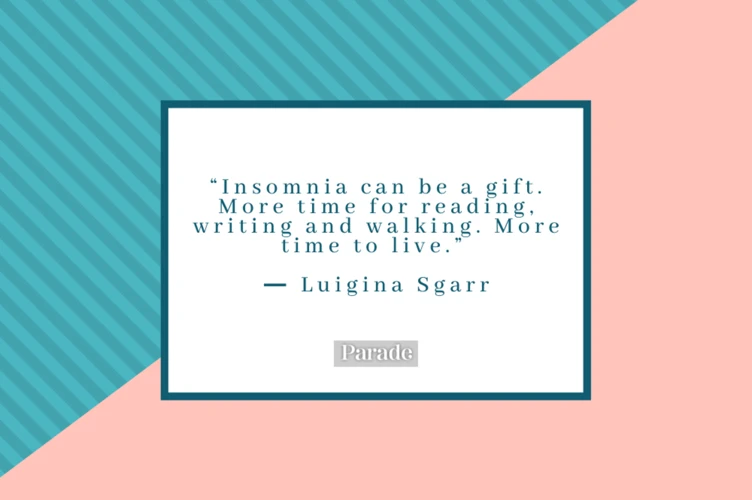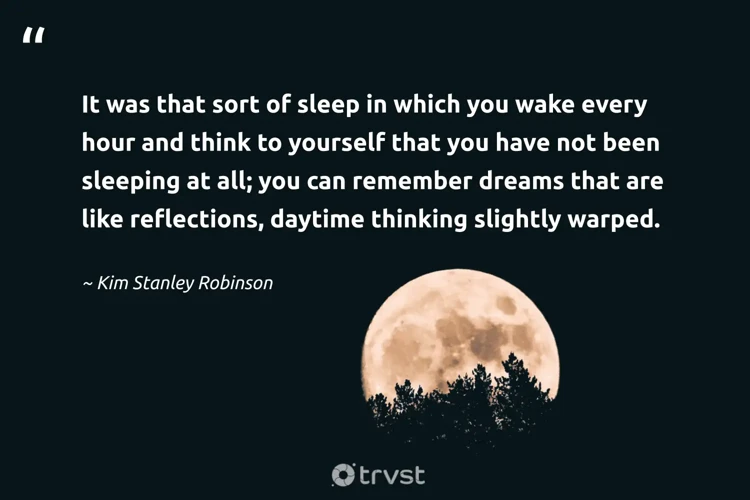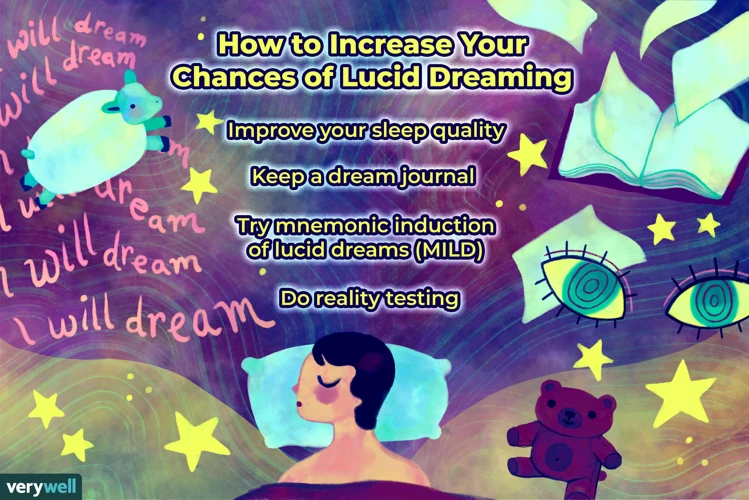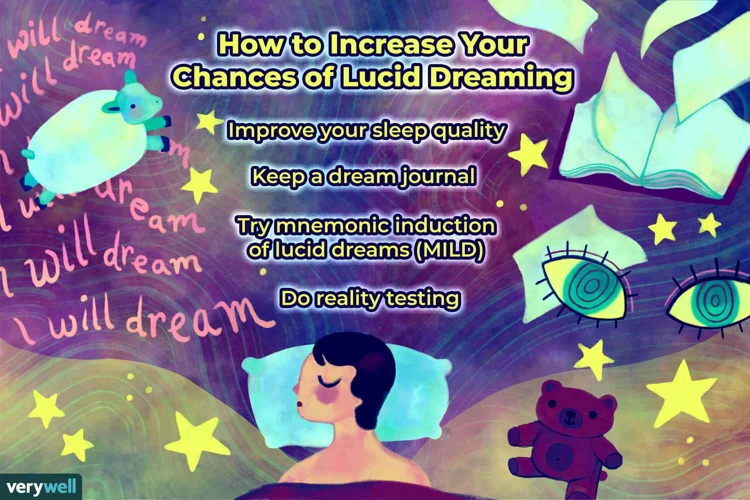Have you ever wondered about the mysterious connection between insomnia and lucid dreaming? It’s a fascinating topic that has captivated the minds of many sleep enthusiasts and researchers alike. Insomnia, the condition characterized by difficulty falling asleep or staying asleep, has long been associated with sleep disturbances and negative impacts on overall sleep quality. However, what is less known is the intriguing role insomnia plays in the realm of lucid dreaming. In this article, we will delve into the depths of the complex relationship between insomnia and lucid dreaming, exploring how insomnia affects sleep and how it can potentially enhance certain aspects of dream experiences. So, sit back, relax, and prepare to embark on an eye-opening journey into the world of dreams and sleep.
What is Insomnia?

Insomnia is a sleep disorder characterized by persistent difficulty falling asleep or staying asleep, despite having the opportunity to do so. It is estimated that around 30% of adults experience occasional insomnia, while approximately 10% suffer from chronic insomnia, which is defined as difficulty sleeping for at least three nights a week for a period of three months or longer. Insomnia can manifest in various forms, including difficulty falling asleep at the beginning of the night, frequently waking up during the night and having trouble going back to sleep, or waking up too early in the morning and being unable to fall back asleep. It is important to note that the quality of sleep is just as crucial as the quantity, and individuals with insomnia often experience poor sleep quality, which can contribute to daytime sleepiness, fatigue, and impaired cognitive function. Insomnia can be caused by several factors, including stress, anxiety, depression, certain medications, medical conditions, and lifestyle factors such as irregular sleep schedules or excessive consumption of caffeine and alcohol. It is crucial to address and manage insomnia effectively to avoid long-term negative impacts on physical and mental well-being. While there are various treatment options available, including medications and therapy, some individuals may also explore natural remedies or alternative practices to enhance their sleep and dream states. (Link: natural-remedies-insomnia-enhancing-dream-states)
Insomnia’s Impact on Sleep

Insomnia can have a profound impact on sleep, disrupting the delicate balance necessary for restful and rejuvenating slumber. One of the primary ways insomnia affects sleep is by causing disturbed sleep patterns. Individuals with insomnia often struggle to initiate sleep or experience frequent awakenings throughout the night, leading to fragmented and shallow sleep. This can result in reduced sleep efficiency and an overall decrease in the amount of time spent in deep, restorative sleep stages such as REM sleep. Additionally, insomnia is associated with elevated brain activity during sleep, particularly in regions of the brain involved in monitoring and alertness. This heightened brain activity can further interfere with the ability to enter and maintain deep sleep, disrupting the natural sleep architecture. As a consequence, individuals with insomnia may experience a decreased quality of sleep, which can have various negative effects on physical and mental health. (Link: insomnia-dream-quality)
Disturbed Sleep Patterns
Disturbed sleep patterns are a common occurrence in individuals suffering from insomnia. These patterns can manifest in various ways, affecting the overall quality and duration of sleep. One of the most prevalent disruptions is difficulty falling asleep, where individuals may lie awake for hours before finally drifting off into slumber. This delay in sleep onset can be attributed to heightened levels of arousal and increased brain activity, making it challenging for the mind to relax and transition into sleep mode. Another form of disturbed sleep pattern is frequent awakenings throughout the night, where individuals may find themselves waking up multiple times, often feeling restless and unable to return to a deep sleep. These interruptions can be triggered by a range of factors, such as racing thoughts, physical discomfort, or environmental disturbances. Additionally, individuals with insomnia may also experience early morning awakenings, wherein they wake up much earlier than desired and struggle to go back to sleep. This can leave them feeling unrefreshed and leading to daytime fatigue. The disruption in sleep patterns caused by insomnia can have a significant impact on overall sleep quality and can contribute to an increased risk of experiencing other sleep-related disorders. For individuals interested in exploring the spiritual or introspective aspects of sleep and dreams, these disturbances in sleep patterns can present particular challenges. However, it is important to note that with the right techniques and strategies, individuals with insomnia can learn to manage their sleep patterns effectively and even use them as a gateway to explore the realms of dreams and spirituality. (Link: examining-insomnia-barrier-dreamwork-spiritual-growth)
Elevated Brain Activity
Elevated brain activity is a common characteristic of insomnia. When individuals experience difficulty falling asleep or staying asleep, their brains often remain highly active during the night. This heightened brain activity can be observed through various methods, such as electroencephalography (EEG) readings. Research has shown that insomnia is associated with increased beta and gamma wave activity, which are brainwave frequencies linked to alertness, active thinking, and problem-solving. This means that individuals with insomnia tend to have more active and active minds even during sleep, making it challenging for them to reach deep and restorative sleep stages.
Additionally, elevated brain activity during insomnia can also be seen in the form of hyperarousal or increased physiological and psychological arousal. This can manifest as a heightened state of alertness, racing thoughts, and an inability to relax. Studies have shown that individuals with insomnia often exhibit higher levels of stress hormones such as cortisol, indicating a state of chronic arousal.
The impact of elevated brain activity in insomnia extends beyond just the nighttime. During the day, individuals with insomnia may experience symptoms such as difficulty concentrating, irritability, and impaired cognitive function due to the ongoing hyperarousal. This cycle of heightened brain activity during both day and night can create a vicious cycle, perpetuating the insomnia and making it even more challenging to achieve a restful night’s sleep.
Understanding the role of elevated brain activity in insomnia is crucial for developing effective treatment strategies. By targeting and reducing this heightened brain activity, individuals with insomnia can have a better chance of achieving a calm and relaxed state conducive to quality sleep. Techniques such as meditation, relaxation exercises, and cognitive-behavioral therapy for insomnia (CBTi) have shown promising results in reducing brain activity and promoting better sleep. Incorporating these strategies into a comprehensive treatment plan can help individuals with insomnia regain control over their sleep patterns and improve their overall well-being.
Lucid Dreaming Explained

Lucid dreaming is a fascinating phenomenon that occurs when an individual becomes aware that they are dreaming while still within the dream itself. In a lucid dream, the dreamer is not just a passive observer but an active participant, consciously navigating and manipulating the dream environment. This heightened level of awareness allows individuals to have vivid and realistic experiences that can be both thrilling and transformative. During a lucid dream, individuals may be able to control their actions, alter the dream scenery, and even interact with dream characters as if they were real. Lucid dreaming occurs during the REM (Rapid Eye Movement) stage of sleep, which is the stage characterized by increased brain activity and vivid dreaming. While the exact mechanisms behind lucid dreaming are still not fully understood, it is believed to involve a combination of brain processes, including increased activity in the prefrontal cortex, the area responsible for self-awareness and decision-making. Lucid dreaming has captured the attention of researchers and enthusiasts due to its potential applications in various areas, such as psychology, creativity, problem-solving, and even spiritual exploration. Understanding the intricacies of lucid dreaming can open up a world of possibilities for individuals to explore and harness the power of their dreams.
The Relationship between Insomnia and Lucid Dreaming

The relationship between insomnia and lucid dreaming is a fascinating one that has garnered much interest from both sleep researchers and lucid dream enthusiasts. While insomnia is often associated with sleep disturbances and negative impacts on overall sleep quality, it can also have a significant influence on the occurrence and experience of lucid dreaming. One aspect of this relationship involves the influence of insomnia on dream recall. Insomnia may disrupt the sleep cycle, causing individuals to wake up frequently throughout the night, and this increased arousal can enhance the chances of remembering dreams upon awakening. (Link: insomnia-dream-quality) Additionally, individuals with insomnia tend to have heightened brain activity during sleep, which may contribute to an increased awareness and consciousness during dream states. This elevated cognitive activity can potentially facilitate the onset of lucid dreaming, where individuals become aware that they are dreaming and can actively participate in and manipulate their dreams. Insomnia can also play a role in the development and practice of lucid dream induction techniques. As individuals with insomnia are often awake for prolonged periods during the night, they can utilize this time to engage in reality checks, visualization exercises, or other lucid dreaming techniques, increasing their chances of experiencing lucidity in their dreams. Although insomnia can be challenging to cope with, it can also provide a unique opportunity for individuals to explore and harness the power of lucid dreaming.
Influence on Dream Recall
In insomnia, one of the fascinating ways in which it can influence dream experiences is through its impact on dream recall. Dream recall refers to the ability to remember and recollect dreams upon waking up. Insomniacs often experience fragmented sleep patterns and frequent awakenings throughout the night, which can heighten their awareness during the brief moments of wakefulness. This heightened awareness can lead to a higher likelihood of remembering dreams. As individuals with insomnia struggle with maintaining continuous sleep, they may find themselves waking up multiple times during the night, providing ample opportunities to recall and retain dream memories. Additionally, the frustration and restlessness that often accompany insomnia can result in individuals paying more attention to their dreams as a form of escapism or entertainment. This increased focus and consciousness towards dreaming can boost dream recall abilities. The fragmented nature of sleep in insomnia can result in vivid and emotionally intense dreams, making them more memorable upon awakening. Insomnia’s influence on dream recall can offer insomniacs a richer and more immersive dream experience, providing a gateway into exploring the depths of their mind during the heightened state of sleep.
Enhanced Dream Awareness
Enhanced dream awareness is a fascinating aspect of lucid dreaming that individuals with insomnia may experience. Due to the disrupted sleep patterns and elevated brain activity associated with insomnia, individuals may find themselves more alert and aware during their dreams. This heightened level of consciousness can lead to a greater ability to recognize when dreaming, which is a key component of lucid dreaming. (Reference: Insomnia’s Impact on Sleep section)
One way to enhance dream awareness is through the practice of reality checks. Reality checks involve questioning the state of reality during waking hours, which then carries over into the dream state. For example, individuals may regularly ask themselves, “Am I dreaming?” and perform simple tests like trying to push a finger through their palm or reading text multiple times to see if it changes. By cultivating this habit of questioning reality, individuals with insomnia can increase their chances of realizing they are dreaming. This heightened self-awareness can then lead to the ability to exert control over the dream environment and engage in lucid dreaming.
Another technique to enhance dream awareness is through the use of dream journaling. Keeping a dream journal involves recording dreams immediately upon waking, capturing as many details as possible. This practice helps individuals with insomnia develop a stronger connection with their dreams, improving their ability to recall and analyze them. Additionally, by regularly reviewing their dream journal, individuals may start to notice patterns or recurring themes, which can act as triggers for lucid dreaming. (Reference: Techniques to Promote Lucid Dreaming with Insomnia section)
Enhanced dream awareness is a potential benefit of insomnia when it comes to lucid dreaming. Individuals with insomnia may naturally have a heightened level of alertness and consciousness during dreams, making it easier to recognize and engage with the dream state. By incorporating techniques such as reality checks and dream journaling, individuals can further enhance their dream awareness and increase their chances of experiencing lucid dreams. (Link: Techniques to Promote Lucid Dreaming with Insomnia)
Induction Techniques
Induction techniques play a crucial role in the world of lucid dreaming, offering methods to increase the likelihood of experiencing lucid dreams. These techniques are particularly interesting for individuals with insomnia, as they can capitalize on the heightened state of awareness that often accompanies sleep difficulties. One popular induction technique is reality checking, which involves conducting frequent reality checks throughout the day to develop a habit of questioning whether one is in a dream or reality. These reality checks may involve looking at clocks or texts, trying to push a finger through a solid object, or checking one’s reflection in a mirror. Another commonly used technique is wake-induced lucid dreaming (WILD), where individuals aim to transition directly from wakefulness to a state of lucid dreaming without losing consciousness. This technique requires a delicate balance between relaxation and maintaining awareness while the body falls asleep. Additionally, mnemonic induction of lucid dreams (MILD) involves repeating a phrase or mantra related to lucid dreaming while falling asleep, with the intention of remembering to recognize and control dreams. These induction techniques, among others, provide strategies for individuals with insomnia to actively engage in the cultivation of lucid dreams, enhancing their dream experiences and potentially improving overall sleep satisfaction.
Techniques to Promote Lucid Dreaming with Insomnia
In the quest to harness the power of lucid dreaming, individuals with insomnia may find solace in various techniques that can promote lucid dreaming despite their sleep difficulties. One effective approach is to prioritize sleep hygiene, which involves creating a conducive sleep environment and adopting healthy habits to improve the overall quality of sleep. This includes maintaining a regular sleep schedule, avoiding stimulating activities or electronic devices before bedtime, and ensuring a comfortable sleep environment. Another technique is dream journaling, a practice where one records their dreams immediately upon waking. This not only aids in improving dream recall but also cultivates a heightened awareness of the dream state, making it easier to recognize and control dreams in the future. Additionally, incorporating reality checking throughout the day can be beneficial. This involves questioning your reality to determine whether you are dreaming or awake. By habitually checking reality, you are more likely to carry this habit into your dream state, increasing the chances of realizing when you are dreaming and subsequently achieving lucidity. While insomnia may pose challenges to sound sleep, these techniques can empower individuals to enhance their lucid dreaming experiences and explore the depths of their subconscious mind.
Sleep Hygiene
Sleep hygiene refers to a set of practices and habits that promote healthy and restful sleep. For individuals with insomnia who are also interested in exploring lucid dreaming, adopting good sleep hygiene practices becomes even more important. Firstly, it is crucial to establish a consistent sleep schedule by going to bed and waking up at the same time every day, even on weekends. This helps regulate the body’s internal clock and promotes a regular sleep-wake cycle. Creating a calming bedtime routine can signal to the body and mind that it’s time to relax and prepare for sleep. This may include activities such as reading a book, taking a warm bath, or practicing relaxation techniques like deep breathing or meditation. (Link: natural-remedies-insomnia-enhancing-dream-states). A comfortable sleep environment is also essential for promoting quality sleep. Ensure that the bedroom is cool, quiet, and dark, and consider using earplugs, eye masks, or white noise machines if necessary. Avoiding electronic devices, such as smartphones and laptops, before bed is vital as the blue light emitted from these devices can disrupt the production of the sleep hormone, melatonin. Additionally, avoiding stimulants like caffeine and nicotine close to bedtime can help promote better sleep quality. By following these sleep hygiene practices, individuals with insomnia can create an optimal sleep environment and increase their chances of experiencing restful sleep and potentially enhance their ability to have lucid dreams. (Link: insomnia-dream-quality)
Dream Journaling
Dream journaling is a powerful technique that can significantly enhance the practice of lucid dreaming, particularly for individuals with insomnia. Keeping a dream journal involves recording your dreams as soon as you wake up, capturing as many details as possible. This practice serves two primary purposes. Firstly, it improves dream recall by encouraging the brain to pay closer attention to dreams and retain them in memory. Secondly, it helps identify common dream themes, patterns, and symbols, which can be used as cues to recognize when you are dreaming during the night. To start dream journaling, keep a notebook or use a dedicated mobile app specifically designed for recording dreams. Place it beside your bed, ensuring easy access upon waking. As soon as you awaken, before getting out of bed, take a few moments to reflect on your dreams and jot down any vivid memories or fragments. Include details such as emotions, settings, characters, and specific events. Using bullet points or a numbered list can help organize your entries efficiently. Consistency is key, so try to make dream journaling a habit by recording your dreams every morning, even if you only remember snippets or vague impressions. Over time, you may start to notice recurring themes or triggers that lead to lucid dreaming, allowing you to explore the dream world more consciously and vividly.
Reality Checking
Reality checking is a technique that can be highly effective in promoting lucid dreaming, especially for individuals who experience insomnia. This technique involves regularly questioning and assessing the reality of your surroundings while you are awake. By incorporating this habit into your waking life, it becomes more likely to carry over into your dreams, increasing the likelihood of becoming lucid. Here are a few reality checking techniques that can be practiced:
1. Reality Testing: Throughout the day, make it a habit to perform reality checks. This can be as simple as looking at your hands and counting your fingers, trying to push your finger through the palm of your hand, or asking yourself if you are dreaming. These reality checks help train your brain to question your reality, making it more likely for you to notice inconsistencies in your dreams.
2. Digital Reality Checks: Set reminders on your phone or computer to prompt reality checks throughout the day. This can help reinforce the habit of questioning your reality and increase the chances of performing reality checks in your dreams.
3. Dream Signs: Pay attention to recurring themes or events in your dreams. These dream signs can serve as triggers for reality checks. For example, if you often dream about flying, make it a habit to perform a reality check whenever you see something related to flying in your waking life.
4. Mindfulness: Practice being present and aware in your daily activities. This can help you become more attuned to your surroundings, making it easier to recognize anomalies or inconsistencies in your dreams.
Remember, consistency and persistence are key when it comes to reality checking. Incorporate these techniques into your daily routine, even during times of insomnia, to increase your chances of experiencing lucid dreams. (Link: insomnia-dream-quality)
Conclusion
In conclusion, the role of insomnia in lucid dreaming is a complex and intriguing phenomenon. Insomnia, with its disrupted sleep patterns and heightened brain activity, can potentially influence various aspects of dream experiences. While insomnia may initially be viewed as a sleep disorder that negatively impacts overall sleep quality, it can also serve as a gateway to exploring the realm of lucid dreaming. Insomniacs may experience enhanced dream awareness and an increased ability to recall dreams, offering them more opportunities to engage in lucid dreaming. Additionally, the induction techniques used to promote lucid dreaming may be particularly effective for individuals with insomnia. Techniques such as sleep hygiene, dream journaling, and reality checking can help individuals with insomnia create a conducive environment for lucid dreaming and increase their chances of experiencing such dreams. It is important to approach the relationship between insomnia and lucid dreaming with caution and seek professional guidance if necessary, as managing insomnia and ensuring adequate sleep is crucial for overall well-being. Lucid dreaming can be a fascinating and transformative experience, but it is essential to prioritize sleep health and address any underlying sleep disorders to make the most of this unique phenomenon.
Frequently Asked Questions
1. Can insomnia be cured completely?
While insomnia can be effectively managed and treated, it may not be completely cured for everyone. The treatment approach depends on the underlying causes of insomnia and may involve a combination of lifestyle changes, therapy, and medication.
2. Does insomnia only affect sleep quantity, or can it also impact sleep quality?
Insomnia can affect both sleep quantity and quality. Individuals with insomnia often experience difficulty falling asleep, frequent awakenings during the night, and poor overall sleep quality, which can lead to daytime fatigue and impaired cognitive function.
3. Can chronic insomnia have long-term negative health effects?
Yes, chronic insomnia can have various negative health effects. It is associated with an increased risk of developing mental health disorders, such as depression and anxiety, as well as physical health issues, including heart disease, obesity, and diabetes.
4. Is insomnia more common in certain age groups?
Insomnia can affect individuals of all age groups, but it becomes more prevalent with age. Older adults are more likely to experience insomnia due to factors such as medical conditions, medication side effects, and changes in sleep patterns.
5. Can insomnia be caused by excessive screen time?
Excessive screen time, especially close to bedtime, can disrupt the sleep-wake cycle and contribute to insomnia. The blue light emitted by electronic devices can suppress the production of melatonin, a hormone that regulates sleep, making it more difficult to fall asleep.
6. Can insomnia be a symptom of an underlying medical condition?
Yes, insomnia can be a symptom of various underlying medical conditions, including sleep apnea, restless legs syndrome, chronic pain conditions, and mental health disorders. It is important to consult a healthcare professional to rule out any potential medical causes.
7. Does insomnia only affect nighttime sleep, or can it also impact daytime functioning?
Insomnia can impact both nighttime sleep and daytime functioning. The sleep disturbances caused by insomnia can lead to daytime sleepiness, fatigue, difficulty concentrating, mood swings, and reduced productivity.
8. Can insomnia affect dream recall?
Yes, insomnia can potentially impact dream recall. When sleep is fragmented and disrupted, it may lead to difficulty remembering dreams upon waking. However, individuals with insomnia who do remember their dreams may find that their dream experiences are more vivid and intense.
9. Is there a connection between insomnia and sleepwalking?
Insomnia and sleepwalking are separate sleep disorders, but they can coexist in some individuals. Chronic sleep deprivation caused by insomnia may increase the risk of sleepwalking episodes, although the exact relationship between the two conditions is still being studied.
10. Can improving sleep hygiene help alleviate insomnia?
Yes, improving sleep hygiene can be an effective strategy for managing insomnia. This includes establishing a consistent sleep schedule, creating a relaxing bedtime routine, optimizing the sleep environment, and avoiding stimulating activities and substances before bed.








